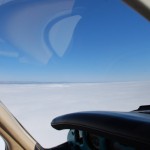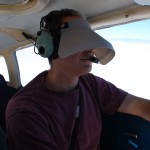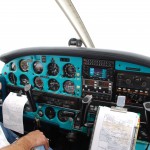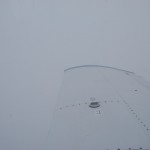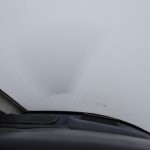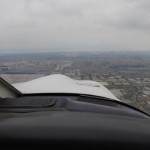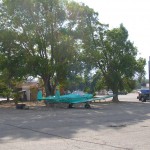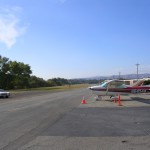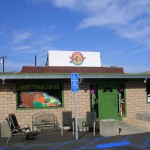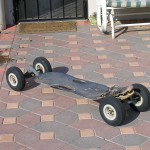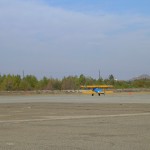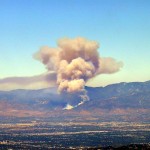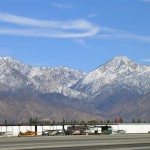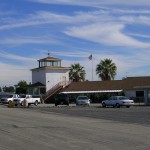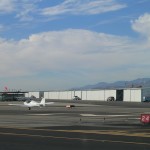Instrument Practice
Wednesday, November 25th, 2009How instrument pilots practice their skills can be confusing to non-pilots (or even to VFR-only pilots). In mid-October Marc Zorn and I went up and did some practice approaches, and Marc took some great pictures that may help make the process easier to understand. Here’s a short description of what we did.
First to set the stage, the whole LA basin was under an overcast layer with bases at between 1,000′-1,500′ and with tops between 2,500′-3,000′. Visibility above and below the layer was excellent. This means we were on IFR clearances all day, but much of our flying was in VFR conditions. In fact, when we were above the clouds things looked like this:
As you can see, as far as keeping the aircraft right side up, these conditions are (almost) as good as a clear day with no clouds at all. I say “almost” because there are some differences between the cloud deck and a real horizon – a sloped cloud deck can lead to the illusion that the plane’s level when it’s really banked – and because it’s a lot harder to see where the airports are. In order to practice controlling the plane without reference to the outside clues, the training pilot wears a view-limiting device – usually called a hood – that restricts what he or she can see. Generally a hood restricts the pilot’s vision to stop at the top of the glareshield (dashboard on a car). Here I am wearing a hood:
While Marc is enjoying that gorgeous view, I’m seeing instruments and gray plastic. But, because I can’t see other airplanes Marc is acting as a safety pilot for me. That means he’s looking out for other aircraft and letting me know if there’s a situation where I should remove the hood and take action. Of course if there’s an emergency that happens so fast that it’s safest for him to take control of the airplane, he can do that as well. We talk through the parameters of that on the ground. A safety pilot needs to be qualified to fly the aircraft, of course.
While we’re above and below the clouds, I’m under the hood and Marc’s looking around (and taking the occasional picture). Today we have some time when we’re in real instrument conditions – inside clouds. When that happens, Marc lets me know and I take the hood off. Here are a couple shots inside a cloud:
That picture inside the plane isn’t photoshopped. There’s nothing but white outside, and the plane is being controlled entirely by instruments (and me). You can see the wings, as the second image shows, but without a horizon to reference, that isn’t much help.
For those of you familiar with the LA airspace, the picture inside the plane was taken just as we were joining the localizer for the ILS approach into Oxnard. The ILS provides vertical and lateral guidance to the airport – that is it tells the pilot what direction to fly to get to the airport and how high to be at any point on the approach. It’s a precise system. It can guide a plane to within 200′ (altitude) of the runway threshold, from which point you land by eye. Today the ceilings were much higher, but after breaking out of the clouds I went back under the hood until the 200′ mark. Inside the clouds the view looks like this (the blur is the propeller):
At around 1000′, we break out and it looks like this:
The runway is the black strip right above the curl in the cowling between the propeller and the oil door. It’s much easier to see on the larger image.
If we’re flying the approach in real life, we transition mostly to visual flying at this point; while training I go back under the hood. We land at Oxnard and then filed a flight plan to another airport and do it all again. Sometimes pilots intentionally miss an approach (in coordination with ATC) to get more approaches in, but I wanted to practice the transition to visual flying through to a landing today.
So that’s a little bit about how instrument training goes. Marc took all the pictures in this entry, and I downscaled them somewhat, so distortions are my fault.
